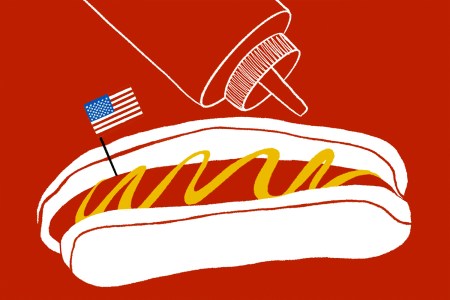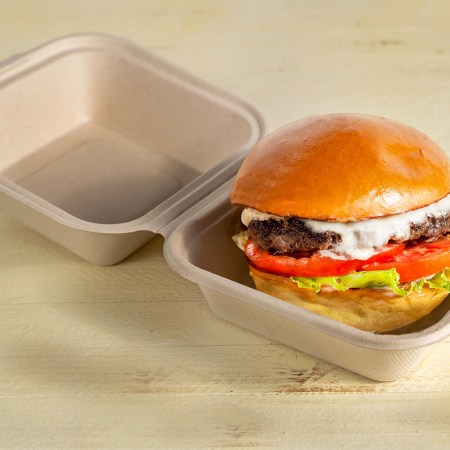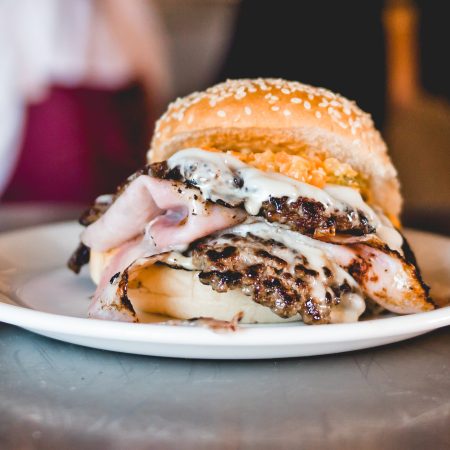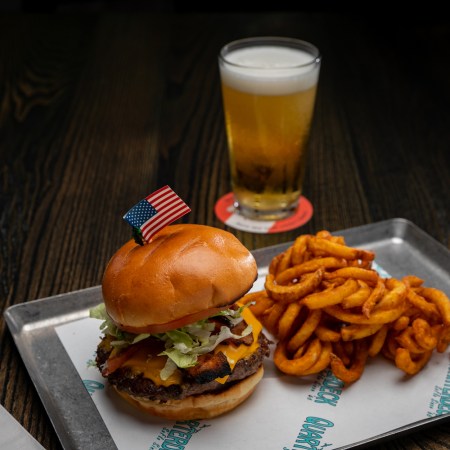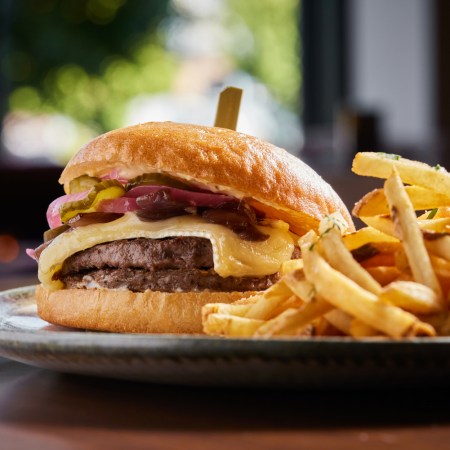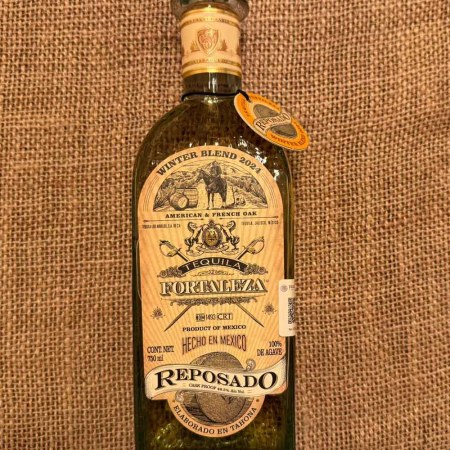There are few dishes more satisfying than a beefy, cheesy burger with all the fixings. And just like hot dogs in the United States, there are some wonderful regional variations as well. You’ve probably heard of Minnesota’s iconic Juicy Lucy but maybe aren’t as familiar with Connecticut’s Steamed Cheeseburg. But no matter — after digging into these 12 regional types of burgers, you’ll be an expert, ready to slay the griddle at your next cookout or family dinner.

Wisconsin Butter Burger
While I’m sure the idea of putting butter on a hamburger patty existed before Wisconsin was a state, the Wisconsin Butter Burger became popular in the 1930s. Many credit Solly’s Grille in Glendale and Kroll’s in Green Bay as the pioneers of this Midwestern creation.
The Butter Burger is largely unchanged to this day, though there are two methods of preparation. A griddled beef patty (or two, or three) is prepared with minimal adornment, simply seasoned with salt. Then a heap of butter is either applied directly to the burger during the last seconds of cooking or smeared onto the top of the grilled bun (the bottom bun gets the cheese). The burger is then finished with the classic lettuce/tomato/pickle/onion combo, though many purists will insist that grilled or stewed onions are the only topping this burger needs. The juicy, delicious mess of savory goodness pairs best with crinkle-cut fries and extra napkins.

Juicy Lucy
In 1954 at Matt’s Bar and Grill in Minneapolis, a customer had the foresight to ask for something a bit extra. Specifically, he asked for a burger with the American cheese placed in-between the raw beef patties before cooking. As lore goes, he proclaimed “that’s one Juicy Lucy,” and burger history was born.
The Juicy Lucy (or spelled Jucy Lucy at Matt’s) remains true to that original burger from 70 years ago. Two small, thin beef patties — normally no more than two ounces each — are used to sandwich in a slice or two of cheese. The meat is carefully formed together to ensure the cheese stays inside the burger and doesn’t erupt on the grill. The burger is simply topped; raw or griddled onions are welcome. One caution to the Juicy Lucy newcomer: let the burger cool for a minute or two before devouring, as the cheese inside is akin to magma right from the grill.

Pimento Burger
Pimento cheese — a wonderful combination of mayonnaise, sharp cheddar cheese and pimentos — is the best thing that most of America has yet to fully embrace. Created in New York in the late 1800s (the first version was a combination of cream cheese and pimentos), this cheese spread didn’t become distinctly Southern until after World War II, and most agree the Pimento Burger took off in South Carolina in the 1960s.
Assembly is quite simple. A thick four- to six-ounce burger patty is seasoned and griddled on one side. The burger is then flipped, topped with a mound of pimento cheese and finished for another minute or two. Once cooked, the burger/cheese stack is placed on a grilled bun, often finished with lettuce, tomato and occasionally raw onion.

Hatch Chile Burger
As with many of the burgers on this list, the Hatch Chile Burger is the result of taking a regional favorite (in this case, roasted green hatch chiles) and melding it with a hamburger. So when roadside diners along Route 66 began popping up in 1920s New Mexico, it was only natural to top their burgers with the fruits of the land.
For those who haven’t had the pleasure, these spicy, earthy chiles are prevalent in much of Southwestern cuisine, adding a smoky and grassy heat to anything lucky enough to receive. This burger is quite simple: a thin patty is fried on a skillet or flattop. With a minute to go in the cook, the patty is topped with the chopped chiles and cheese, usually a white Jack or cheddar. Once cooked, the patty is placed on a soft white roll and served. The rest of the garden is left at home for this one.

Steamed Cheeseburg
Easily the most unique on the list, the Steamed Cheeseburg (or Steamed Ham, IYKYK) is a classic, despite the unusual methods behind it. Its origin is credited to Jack’s Lunch, a restaurant in Middletown, Connecticut. Here in the 1930s, cheese was placed on a roll then steamed, creating a quick lunch for industrial workers in the area. Soon after, a burger patty was added, and history was born.
Cooking a Steamed Cheeseburg is extremely tricky. First, a beef patty is steamed in special metal boxes for a precise amount of time — too little and the burger is raw, too much and the patty is rubbery. Cheese is separately steamed as well. Then a steamed bun is topped with the patty, the cheese and lettuce and tomato. The result is an ultra juicy bite because the use of steam across the board adds tremendous amounts of moisture to the burger.
A Guide to the 11 Most Beloved Regional Hot Dog Styles in the United States
Which is your favorite?
Peanut Butter Burger
A classic case of “don’t knock it until you try it,” the Peanut Butter Burger (or Guberburger, depending where you are), is a personal favorite. Many believe this burger was made popular at the Wheel Inn in Sedalia, Missouri, in 1947, though there are reports of a similar burger being served at this time in West Lafayette, Indiana, at the famous Triple XXX diner. Whether you call it a Guberburger from the Wheel-Inn or a Purvis Burger from Triple XXX (named for the creator, Duane Purvis, a two sport all-American athlete at Purdue University), the ingredients are largely the same.
The burger starts like any other classic diner cheeseburger. A beef patty is smashed and griddled, then topped with American cheese. The bun is also griddled to toast, then slathered with creamy peanut butter on both sides. It’s often finished with the classic lettuce, tomato and onion combo, though many purists (like myself) prefer to leave the toppings off and let the weird and ultra-savory peanut butter and beef do the culinary navigating.

Texas Bean Burger
A San Antonio favorite, this burger broke my brain in the best way. Created in the 1950s and often credited to Sill’s Snack Shack, this burger is a mashup of a diner hamburger and a walking taco (aka a Frito pie).
The burger is started like many others on this list: a four-ounce beef patty is smashed, seasoned and griddled on both sides. Once the burger patties are cooked, the real fun begins. The bottom of a standard white bun is topped with crushed Fritos (and it *has* to be Fritos), Cheese Whiz, the burger patty and a heap of refried beans. The burger is finished with chopped raw onions and another sprinkle of Fritos. The resulting bite is full of contrasting flavors and textures that work together perfectly.

Oklahoma Onion Burger
The history of the Oklahoma Onion Burger is perhaps the most misunderstood of the bunch. Many thought it to be born from the Great Depression, but George Motz, author of The Great American Burger Book, says otherwise. “The onion burger existed before 1929, with records showing this to be from as early as 1922,” he says. In the town of El Rino, a workman’s strike left up to 50,000 workers out of a job. “This called for culinary innovation, where Sid’s Diner created a burger with a 1:1 beef to onion ratio,” he adds. The result not only stretched thinning resources in the community, but it created a delicious burger in the process.
This burger is more about the technique than the ingredients. It starts with a pile of very thinly sliced onions on a hot griddle. These onions are seasoned before an equal amount of beef is hard smashed into them. The onion/beef patty is then cooked for a few minutes on each side and topped with American cheese. The resulting burger is complex, as the sweetness from the onion balances with the savory charred burger.

Frita Cubana
This Miami classic has origins in, you guessed it, Cuba in the 1930s. Based on a Cuban street food, these burgers took their talents to South Beach in the 1960s.
The burger itself is quite complex. Beef is mixed with onion, garlic, chorizo and spices like cumin and paprika. The burger is then smashed onto a hot griddle and cooked on both sides, then topped with a “Frita sauce” (that, upon testing, is wildly similar to Chicago’s Mild Sauce). The patties are placed on warm Cuban rolls and topped with onion and heaps of shoestring fries. The result is a tangy, spicy and crunchy bite that has as much flavor in one burger as humanly possible.

Slugburger
Mississippi’s Slugburger, named for the price (slug was slang for a nickel), is one of the oldest regional variations around. Originating in Corinth, Mississippi, in the 1910s, the ground beef was extended with breadcrumbs, grits and whatever other expendable grains were present. Today, the Slugburger is typically made with either slug, aka ground pork and soy grits, or a secret recipe containing meat and breadcrumbs.
A Slugburger is prepared like any other thin diner burger. The patty is smashed and griddled hot and fast on both sides. The patty is placed on a standard white bun and finished with yellow mustard and sweet pickles. The resulting bite is very crispy, yet the flavor is delicate and savory. The addition of starch to the meat creates a bite akin to the crispy heel of a well-made meatloaf.

Pastrami Burger
If one had to guess where the Pastrami Burger was from, Utah would probably not crack the top 10. But in the 1980s, history was made when Nick Katsanevas, a California burger maker, moved to Salt Lake City and brought with him many of the things he learned in California — including his love for East Coast pastrami. Today, his original spot, Crown Burger, still has some of the best Pastrami Burgers in the area.
The burger begins with hard griddled seasoned beef patties, topped with American cheese. The patties are placed on a large sesame seed bun with a handful of shredded lettuce. A slice of tomato, handful of warm shaved pastrami, a few slivers of raw onion and a spoon of fry sauce (think Thousand Island) round out this masterpiece.

Olive Burger
Admittedly, I had never heard of the Olive Burger until moving to Michigan, though thankfully I never have to go a day without one again. It was likely created in the 1930s at the Kewpee Hotel Hamburgs, though many spots in Grand Rapids, Lansing and Flint all claim some part in the burger’s journey.
Today’s version features a thick burger patty, which is charbroiled, grilled or griddled. The patty is cooked and placed on a large, white sesame seed bun and topped with a sauce made from roughly-chopped green olives, mayonnaise and a bit of olive brine. The resulting burger is delightfully briny, with just enough tartness from the green olives to make it interesting. An acquired taste, perhaps, but certainly a journey worth undertaking.
Join America's Fastest Growing Spirits Newsletter THE SPILL. Unlock all the reviews, recipes and revelry — and get 15% off award-winning La Tierra de Acre Mezcal.

